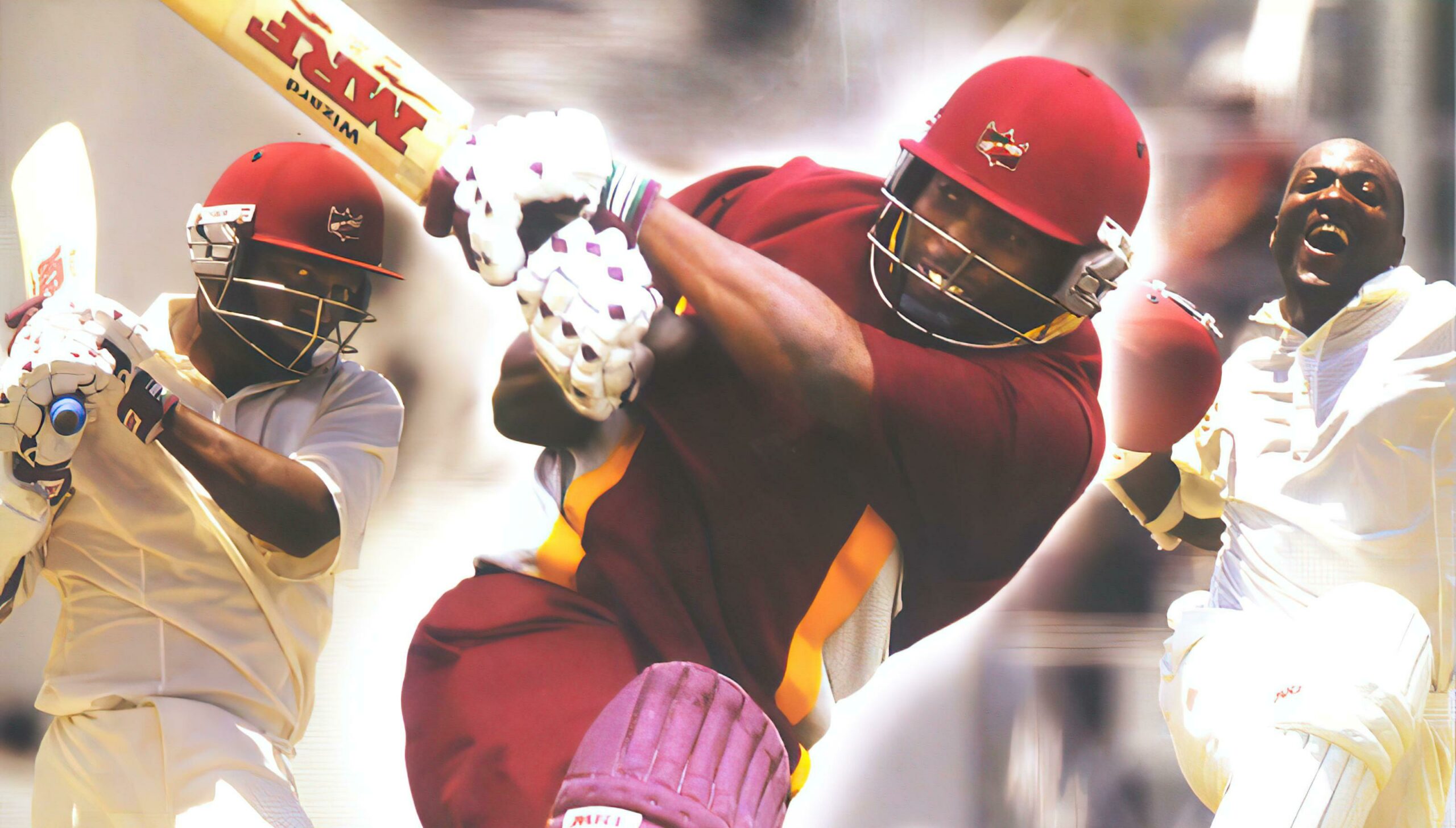You can trust VideoGamer. Our team of gaming experts spend hours testing and reviewing the latest games, to ensure you're reading the most comprehensive guide possible. Rest assured, all imagery and advice is unique and original. Check out how we test and review games here
Every now and then a game is released that seems to pitch a tent and take up a home in your console’s disc tray. For me this happens rarely, with Waverace on the Nintendo 64 (no disc tray, but it was only an analogy), the Pro Evolution Soccer series on PlayStation 2 and Virtua Snooker on the PC being a handful of games that make me want to keep going back for more. While it is true that Brian Lara International Cricket has only just moved in, I have a feeling that its lease will definitely get renewed.
You ask any cricketer, or any sportsman, and they will tell you that timing is the key to success. Yes, power can help, but timing is the key. Time the ball sweetly and watch the ball clatter into the boundary, but swing too early and no amount of power will prevent the inevitable poor outcome. It’s because of this that timing forms the basis for success in Brian Lara. When batting you have three shot options: standard attacking, lofted attacking and defensive. The direction of the shot is determined by the direction of the left analogue stick, with more shot success coming when attempting to hit the ball in the same direction as it’s delivered. There’s no on-screen guide to help you decide when to hit the ball, so you have to use your own judgement. However, the previous shot’s timing is shown on screen to give you an idea if you swung too early, too late or just right. Don’t expect to be hitting boundaries from the first delivery as you’ll have to build up batsman confidence by playing successful defensive and attacking shots. With high batsman confidence you’ll be able to pull off more successful shots and have less risk of giving away your wicket. Your confidence will be reduced if you’re hit by a good delivery, if you swing and miss and also when approaching batting milestones such as fifty or one hundred.
Bowling is definitely much easier to get the hang of and to get good at. Whereas batting requires precise timing, bowling is more about placement and speed. Using an on-screen marker you choose where you want to pitch the ball and then stop an on-screen bar to determine the speed of the delivery. Each bowling type can bowl a number of different deliveries such as seeming balls for the fast/medium paced bowlers and leg cutters for the spinner. Confidence is also important for bowling as once the confidence meter is full you’re able to bowl one of two special deliveries. Special deliveries include Yorkers for pace bowlers and googlies for the leg spinner, and if used correctly can cause a lot of trouble. All bowler types also have the ability to swing the ball, which when combined with a rip roaring 95MPH delivery, can leave the stumps in pieces. It’s important to keep the batsmen guessing, so it’s a good idea to mix up the pace of the deliveries in the hope that the slower ball won’t be spotted. While you’re still somewhat of an amateur at the game, the fielding side definitely has the upper hand, but once you gain more experience at batting, things will begin to level out.
Fielding in the game is also all about timing. Using an onscreen bar that appears when the ball goes to a fielder you must stop the marker as close the middle of the bar as possible. Stop it close to the middle and return a low fast ball or make a catch if the ball is in the air; failure to stop it near the middle will result in the fielder returning a high looping ball to the keeper or a dropped catch. It sounds very simple, and it is, but still requires you to remain on your toes. Field placements can also be fully customised using a simple placement screen. Those without previous cricketing knowledge may want to pick from the large number of pre-set attacking and defensive field placements, but wannabe cricket captains can meticulously place every fielder.
Brian Lara has several game modes that should keep even the most hardened cricket fan occupied. For starters you have the customary exhibition mode, in which you can choose to play a Test Match, One Day International (ODI) or a Double Wicket. I’m sure most are aware of ODIs and Tests, but Double Wicket is something a bit less mainstream. If you’ve played any club cricket, particularly at a junior level, Double Wicket should be somewhat familiar to you. Designed to be a fast, high scoring game, you select just two batsmen who bat out a whole innings of two to ten overs. Should you lose a wicket the batsmen is not out, but runs are deducted from the total score. This mode is fun when playing with people new to the game but once you get your teeth into Brian Lara you’ll want to be playing the ODIs and Tests.
In exhibition mode you have a degree of customisation which can be applied to each game. The most important of these options is the difficulty setting. Ranging from Slog mode, which results in games where the winner is usually whoever hits the most sixes, to Test difficulty, which really is very hard. When set to Test difficulty your timing and shot selection has to be spot on in order to score. You also have the option to change the environmental settings, including the Stadium, time of day, weather and pitch type. All of these combine to produce differing conditions. ODIs and Double Wicket games allow for the match length to be altered as you wish. You can also pick the ball type and condition which can have a huge affect on the ball’s behaviour. The purists out there can also play by the rules and enforce the correct fielding restrictions.
Exhibition mode is fine for the odd single player game but is primarily going to be used when you have another human opponent to play against. The core of the single player experience is found in the tournament mode, which consists of the ICC Cricket World Cup, the ICC Champions Trophy, the World Series XI and a World Tour. The most demanding of the tournament modes is the World Tour. In this mode you can either take part in a single series, where you play against one nation, in a number of ODIs and Tests, or a Full World Tour in which you play against all the Test nations in the world. In each of these modes you’re able to select match difficulty, but trophies are only unlocked when playing on County or Test levels.
If the tournament mode is the career mode, then the Challenge mode can be described as the arcade mode. You’re challenged to take part in classic matches from the past as well as competing against some of the best teams ever to play the game. If you’re finding it difficult to progress though the game modes then don’t despair. Brian Lara kindly includes some nets where you can hone your bowling and batting skills. As a batsman you can choose exactly what kind of delivery you want to practice against, be it short bouncers or full deliveries on the off side.
Visually Brian Lara looks great on all platforms, with solid player models and animations doing a good job creating an authentic experience. You should be aware that the game only has the licence for player names in the ICC Tournaments and doesn’t carry any license for player names or likenesses in any of the other game modes, so expect clever miss-spellings of player names, allowing you to easily identify your Flintoffs from the Warnes. The ICC licence is for the 2003 season, so you’ll see player names such Alec Stewart and Nasser Hussain in the England team. Cricket is a fairly slow game, and this means that the commentary doesn’t have to keep up with the fast paced action that causes problems in football games. As a result, the commentary from the familiar voices of Jonathan Agnew, David Gower and others sounds pretty authentic. The game is presented very well and the icing on the cake is the use of HawkEye in the game. This means you get all the graphics for LBWs and bowling lines just as you see on the TV. You also get third umpire TV replays for close run out decisions and umpires do occasionally give the wrong decision, raising a finger when the ball was clearly going down leg – annoying but realistic.
For all the good things I have said about the game it does have some problems. When starting out it can seem like you’re hitting your head against a wall, as scoring runs on the harder difficulty settings is harder than convincing a Nintendo fanboy to buy an Xbox (I’ve been their and trust me, it is difficult). You’ll spend many overs hitting what seem to be good shots, but they’ll go straight to fielders. Then you’ll take a chance with the more attacking shots and inevitably end up being bowled out for a very low score. You’ve just got to stick with it, as scoring runs on harder difficulty settings is possible, it just takes practice. Fielding is also not without its problems. There’s no way to return the ball to the bowler’s end, which limits your run out opportunities. The ball must always be returned to the keeper for him to remove the bails; you can’t even have a shy at a direct hit. In the end this doesn’t hamper the game too much but can be a little annoying.
Brian Lara International Cricket 2005 is a great for a quick game that can be enjoyed by everyone, but it also offers a good challenge for those willing to put in the time to learn the game’s subtle nuances. Impatient gamers won’t give the game the time it deserves, but should find enjoyment on the lower difficulty settings where high scoring is where it’s at. Those wanting a real cricket simulation won’t be disappointed. Pump up the difficulty and prepare for hard fought, tactical contests that will prove challenging to the end.
For a look at the game in action, take a look at our gameplay movies.
Movie 1: Some big hitting and a job for the TV umpire
Movie 2: HawkEye has been implemented well into the game
Movie 3: The bowler has the upper hand here with some fine deliveries
Movie 4: Practice makes perfect
Right click and ‘Save Target As’ to download files.
Downloads available thanks to Core ISP.






